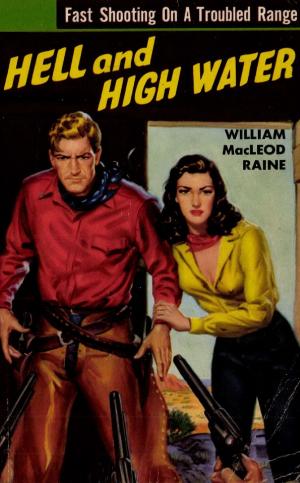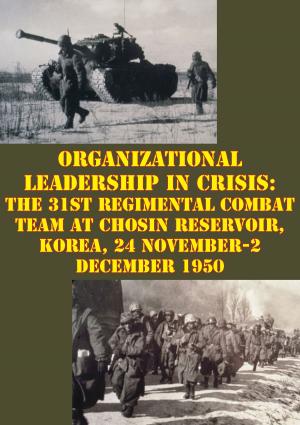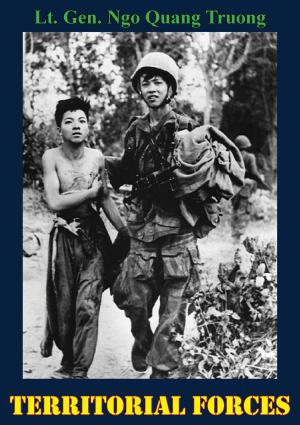Attack On The American Embassy During Tet, 1968: Factors That Turned A Tactical Victory Into A Political Defeat
Nonfiction, History, Military, Vietnam War, Asian, United States| Author: | Major Robert J. O'Brien | ISBN: | 9781782896944 |
| Publisher: | Normanby Press | Publication: | August 15, 2014 |
| Imprint: | Normanby Press | Language: | English |
| Author: | Major Robert J. O'Brien |
| ISBN: | 9781782896944 |
| Publisher: | Normanby Press |
| Publication: | August 15, 2014 |
| Imprint: | Normanby Press |
| Language: | English |
What could have made the Military Police (MP) and Marine Security Guard (MSG) response more effective, averting negative media coverage and public opinion? The Tet Offensive has been widely acknowledged as the turning point of the United States (U.S.) effort in Vietnam. The Viet Cong and North Vietnamese forces attacked over 100 cities and towns on 31 January 1968, during the Tet holiday. At the epicenter of this cataclysmic event was the attack on the U.S. Embassy. Although this was a platoon level action, the publicity generated would be wildly disproportionate to the value of the Embassy as a military target. Controversy has continued unabated four decades later. The media role in conveying the outcome of the attack is still a subject of debate. The fact that the U.S. forces that successfully defended the Embassy were greatly outnumbered and not organized or equipped as combat troops was not portrayed in media reports.
This thesis first examines the attack on the U.S. Embassy during the Tet Offensive of 1968, and what factors turned a tactical victory into a political defeat. The Marine Security Guards (MSGs) and Military Police (MP) were effective at preventing the enemy from entering and holding the Chancery. The MSGs and MPs at the Embassy achieved a clear tactical victory, yet the action was portrayed as a political defeat. Two sets of factors contributed to this portrayal: the political situation, including shifting public opinion and declining media-military relations; and actions taken by the State Department that directly affected the conduct of the action at the Embassy.
What could have made the Military Police (MP) and Marine Security Guard (MSG) response more effective, averting negative media coverage and public opinion? The Tet Offensive has been widely acknowledged as the turning point of the United States (U.S.) effort in Vietnam. The Viet Cong and North Vietnamese forces attacked over 100 cities and towns on 31 January 1968, during the Tet holiday. At the epicenter of this cataclysmic event was the attack on the U.S. Embassy. Although this was a platoon level action, the publicity generated would be wildly disproportionate to the value of the Embassy as a military target. Controversy has continued unabated four decades later. The media role in conveying the outcome of the attack is still a subject of debate. The fact that the U.S. forces that successfully defended the Embassy were greatly outnumbered and not organized or equipped as combat troops was not portrayed in media reports.
This thesis first examines the attack on the U.S. Embassy during the Tet Offensive of 1968, and what factors turned a tactical victory into a political defeat. The Marine Security Guards (MSGs) and Military Police (MP) were effective at preventing the enemy from entering and holding the Chancery. The MSGs and MPs at the Embassy achieved a clear tactical victory, yet the action was portrayed as a political defeat. Two sets of factors contributed to this portrayal: the political situation, including shifting public opinion and declining media-military relations; and actions taken by the State Department that directly affected the conduct of the action at the Embassy.

![Cover of the book U.S. Marine Operations In Korea 1950-1953: Volume II - The Inchon-Seoul Operation [Illustrated Edition] by Major Robert J. O'Brien](https://www.kuoky.com/images/2015/november/300x300/9781786254276-pCbo_300x.jpg)



![Cover of the book Five Chimneys: A Woman Survivor’s True Story Of Auschwitz [Illustrated Edition] by Major Robert J. O'Brien](https://www.kuoky.com/images/2015/november/300x300/9781786251794-vVTC_300x.jpg)



![Cover of the book The Vietnamese Air Force, 1951-1975 — An Analysis Of Its Role In Combat And Fourteen Hours At Koh Tang [Illustrated Edition] by Major Robert J. O'Brien](https://www.kuoky.com/images/2014/august/300x300/9781782898948-QvPi_300x.jpg)
![Cover of the book I Survived Hell On Earth [Illustrated Edition] by Major Robert J. O'Brien](https://www.kuoky.com/images/2015/november/300x300/9781786255785-kHMK_300x.jpg)




